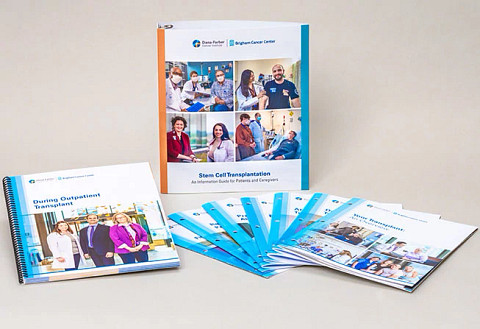
Stem cell transplantation can seem like a daunting and complicated experience. To help you and your loved ones understand the procedure and help you feel as comfortable as possible through every step of care, Dana-Farber has created a comprehensive guide to stem cell transplantation.
Stem Cell Transplantation: An Information Guide for Patients and Caregivers features an easy-to-read format that allows you to scan different sections at your own pace and quickly refer to specific content at any time. You’ll receive your guide during an education session with your oncology nurse navigator. Information from this guide is also online on our Stem Cell Transplant Patient Education website.
The guide is organized into the three main phases of transplantation: before, during, and after. From preparation and planning, to going home after the transplant, our care team ensures that you’re aware of the details that are easy to overlook in a stressful time. You and your caregiver will know what to expect in each phase.
- Before transplant:
Includes the process of preparing and planning for transplant, including your pre-transplant evaluations, admission preparation, and how cell collection works. It also includes information on the donor search process for patients who may need a stem cell donor. - During transplant:
Details your hospital stay from admission to discharge, including what to expect along the way, as well as procedures, symptoms, and complications that may occur. This section also includes descriptions of the roles of members of your transplant team in the inpatient setting. - After transplant:
Covers your transition to and recovery at home, describing important guidelines regarding nutrition and dental care, potential complications, long-term care, sexual activity and recreation. This section also describes important resources, such as the numerous on-site programs and support groups provided by Dana-Farber, as well as recommended external resources.
Additionally, throughout the guide you’ll find numerous patient tools: important guidelines, FAQs, a glossary, as well as care coordination information (accommodations, social services, etc.) and frequently used phone numbers and contact information.
Especially for Caregivers
We also provide A Guide for Caregivers, which details what it means to be a caregiver for a transplant patient. This Guide provides information about how to find support for medical and practical issues, how to guard against infection, and how to form a caregiving team to help with specific tasks.